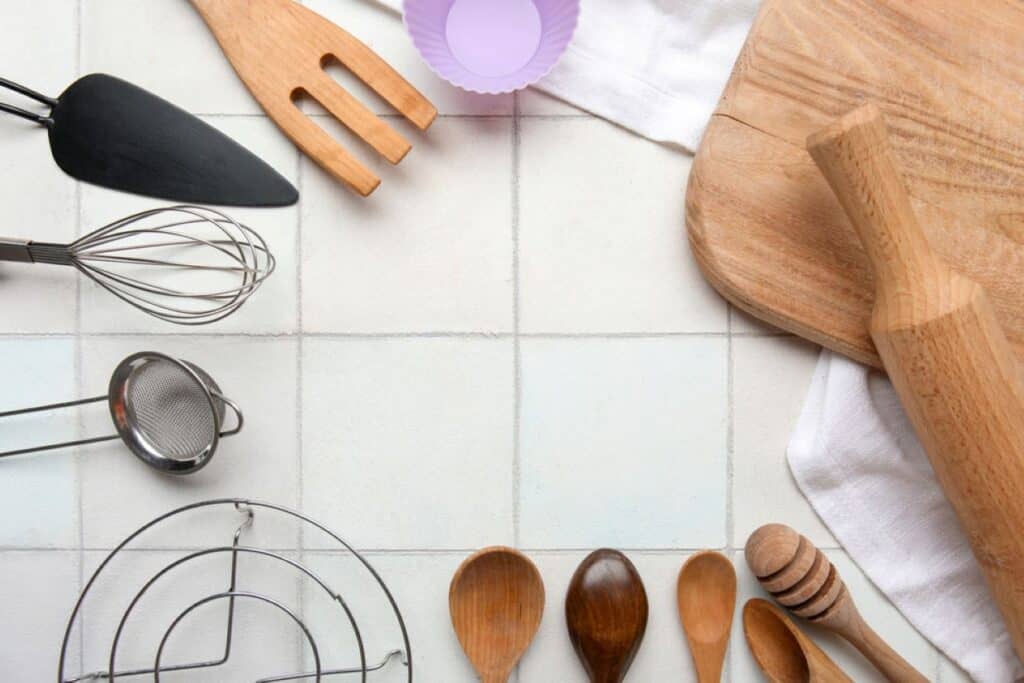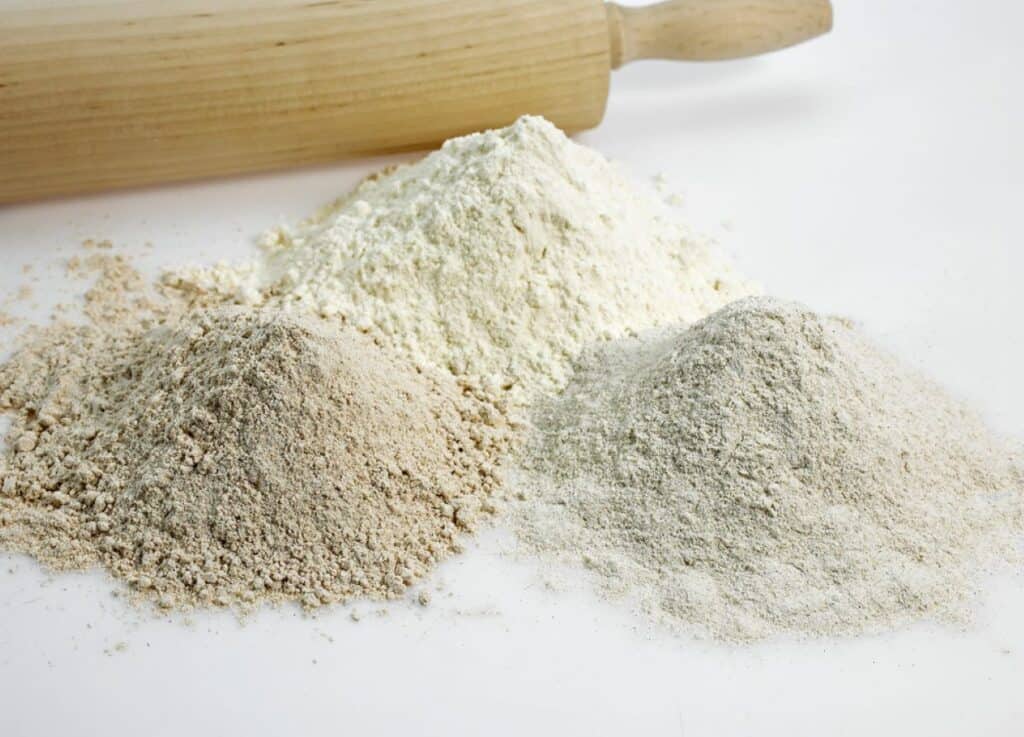In the realm of low-carb living, having the right tools at your disposal can make all the difference. From whipping up savory meals to crafting delectable desserts, this low-carb essential list is necessary for success on your low-carb journey.

Beginning a low-carb or keto diet involves careful planning, especially regarding kitchen essentials. The right ingredients and tools can greatly ease the transition to this lifestyle and make cooking much more enjoyable. Having a curated selection of kitchen must-haves is invaluable. It facilitates the creation of delicious, low-carb meals without the frustration of not having everything you need. This low-carb kitchen essentials list is going to get you started right.
Quality fats, such as those derived from animal products or stable oils suitable for high temperatures, play a vital role in the low-carb kitchen essentials list. Additionally, a range of seasonings and sweeteners that adhere to low-carb principles allows for delicious cooking without excess carbohydrates. Moreover, possessing a set of practical kitchen utensils can significantly improve the cooking process, streamlining food preparation and reducing time spent in the kitchen.
The low-carb essentials list basics
Creating a low-carb kitchen revolves around having the right tools and mastering key cooking techniques. This forms the basis for preparing healthy, carb-conscious meals effectively.
Essential cooking equipment:
- Cookware: High-quality non-stick frying pans and saucepans are crucial for everyday cooking and easy clean-up.
- Appliances: A slow cooker or pressure cooker can be instrumental in preparing proteins and vegetables without adding carbs.
- Prep tools: Sharp knives, cutting boards, measuring cups and spoons ensure accurate portioning and efficient preparation.
- Meal prep: BPA-free plastic containers in various sizes to portion out your meals and snacks for the week ahead.
Staple low-carb ingredients
When building a low-carb kitchen, one must choose ingredients that support a carb-conscious lifestyle. The staples listed here form the backbone of the low-carb kitchen essentials list.
Proteins
Proteins are essential for just about everything. Fatty meats are excellent choices since you get the fat and the protein all in one. For variety, one can include seafood, beef, pork and poultry, just to name a few. Eggs are an indispensable source of protein that can be used in countless recipes as well.

Fats
Choosing the right fats is paramount; they should provide energy and support overall health. Options include fatty meat, as we discussed, as well as olive oil and coconut oil for their cooking versatility. Solid fats like butter and ghee are excellent for frying and baking. One should avoid highly processed fats and opt for those that remain minimally processed.
Vegetables
Vegetables are key, especially low-starch varieties, which are low in carbs but high in nutrients. Leafy greens like spinach and kale are great choices. Cruciferous vegetables such as broccoli and cauliflower offer versatility and are suitable for various cooking methods.
Dairy
Dairy is a popular ingredient in low-carb cooking. One should choose full-fat options where possible, such as cheese and Greek yogurt. When selecting these products, it is crucial to check labels for added sugars that can increase the carb content.
Herbs and spices
In the next section of the low-carb essentials list are herbs and spices. They are indispensable for adding flavor without contributing a significant number of carbohydrates. One can craft simple and complex flavor profiles apt for any dish while maintaining a keto-friendly regimen.
Must-have low-carb herbs and spices:
- Basil
- Cilantro
- Parsley
- Rosemary
- Thyme
- Salt
- Pepper
These can dramatically transform a dish with minimal impact on carbohydrate count. They are versatile and can be used in various cuisines. Always be sure to check labels since carb counts on herbs and spices can be sneaky.
Baking essentials
When one ventures into low-carb baking, the types of flour and sugar used differ from traditional baking. Selecting the right substitutes and tools is crucial for successful outcomes.

Flour alternatives
In low-carb baking, traditional wheat flour is replaced with lower-carb options. One must keep in mind that these alternatives often have different textures and flavors. For instance, almond flour provides a rich, nutty flavor and is an excellent source of protein and healthy fats. Coconut flour is another popular choice, being high in fiber and absorbent, requiring adjustments to liquid quantities in recipes. These flours cannot be used interchangeably in a one-to-one ratio with regular flour due to their unique compositions.
Sugar substitutes
Traditional sugar is high in carbohydrates and not suitable for a low-carb diet. Sweeteners like erythritol — a sugar alcohol — and monk fruit sweetener are options for their natural origins. Inulin can be used both as a sweetener and a fiber supplement, and it is noted to contain 0 net carbs. Overall, there are many 0-calorie sweeteners to choose from.
Baking tools
The right tools are essential for precise measurement and consistency, which is critical in low-carb baking. Key tools include a digital kitchen scale for accurate ingredient measurement and measuring spoons and cups specific to different ingredients. A silicone baking mat provides a non-stick surface, which is helpful for sticky, low-carb doughs. These prepared baking mixes, made in relevant proportions, can be stored using airtight containers, ensuring longevity and convenience for future use.
Final thoughts
By stocking your kitchen with these low-carb essentials, you’ll set yourself up for success on your journey toward better health and vitality. With the right ingredients, tools and preparation techniques, you’ll discover a world of delicious low-carb recipes that nourish your body and tickle your taste buds. So gather your essentials, roll up your sleeves, and get ready to embrace the low-carb lifestyle with confidence and enthusiasm. Here’s to your health and happiness on the road to low-carb success.
Trina Krug, MS, CDSP is a holistic nutritionist, recipe creator and advocate for human health. Her passion for low carb lifestyles, gluten free eating and real nutrition education has led to the creation of Trina Krug. She spends her time creating recipes, hanging out with her family on her farm and actively working on her Doctor of Science in Integrative Health.